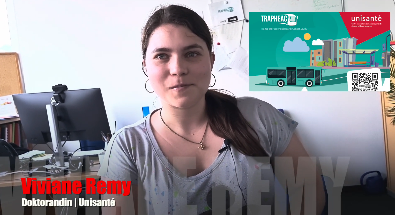On this page, you will find information about the progress of the TRAPHEAC study, press articles, and scientific results and communications related to the study.
NEWS
04.02.2025
NEW FUNDING !

The TRAPHEAC project has received additional funding to further its research on working conditions and the well-being of bus drivers. This support from the University of Lausanne will enable the direct involvement of field professionals, the development of new participatory tools, and the promotion of concrete actions for better workplace health in the public transport sector.
Stay connected to follow the progress of this innovative project!
17.01.2025
FIRST RESULTS
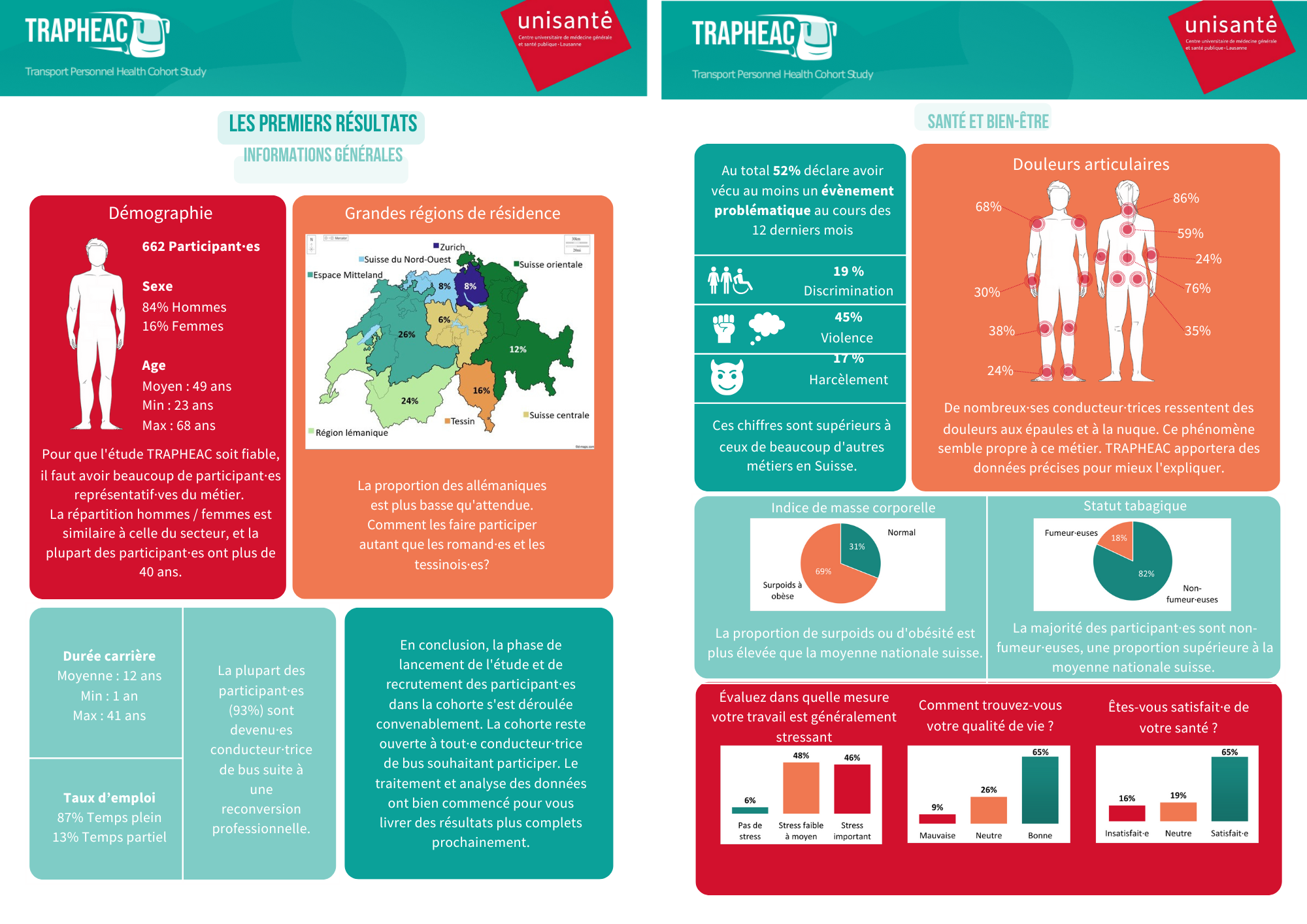
The first recruitment phase for TRAPHEAC is over. Thank you to all the bus drivers who are taking part! TRAPHEAC, which aims to better understand and improve their working conditions, remains open to those who wish to register. Initial results are already available. Data analysis will continue to provide more complete results soon.
17.10.2024
OVER 600 REGISTERED PARTICIPANTS!
You are over 600 participants, and we have recorded more than 8000 visits to the site since the study’s launch. We warmly thank you for your time and efforts in participating. Together, we are improving knowledge on working conditions in public transport, and the results will benefit health. We are also increasing visibility and spreading reliable information about your profession to the public and policymakers. Your participation matters!
30.09.2024
EXTENSION OF THE 1ST CAMPAIGN UNTIL 31.10.2024
We sincerely thank you for starting to fill out the questionnaire! Your participation is crucial, and we greatly appreciate your efforts. To allow you to finish the questionnaire at your own pace, we are offering you an extra month. You now have until October 31, 2024, to complete the remaining sections. To thank you for your commitment, those who complete the questionnaire by this date will receive a Migros voucher worth CHF 25 for completing the full questionnaire.
01.09.2024
Compensation for Your Participation!
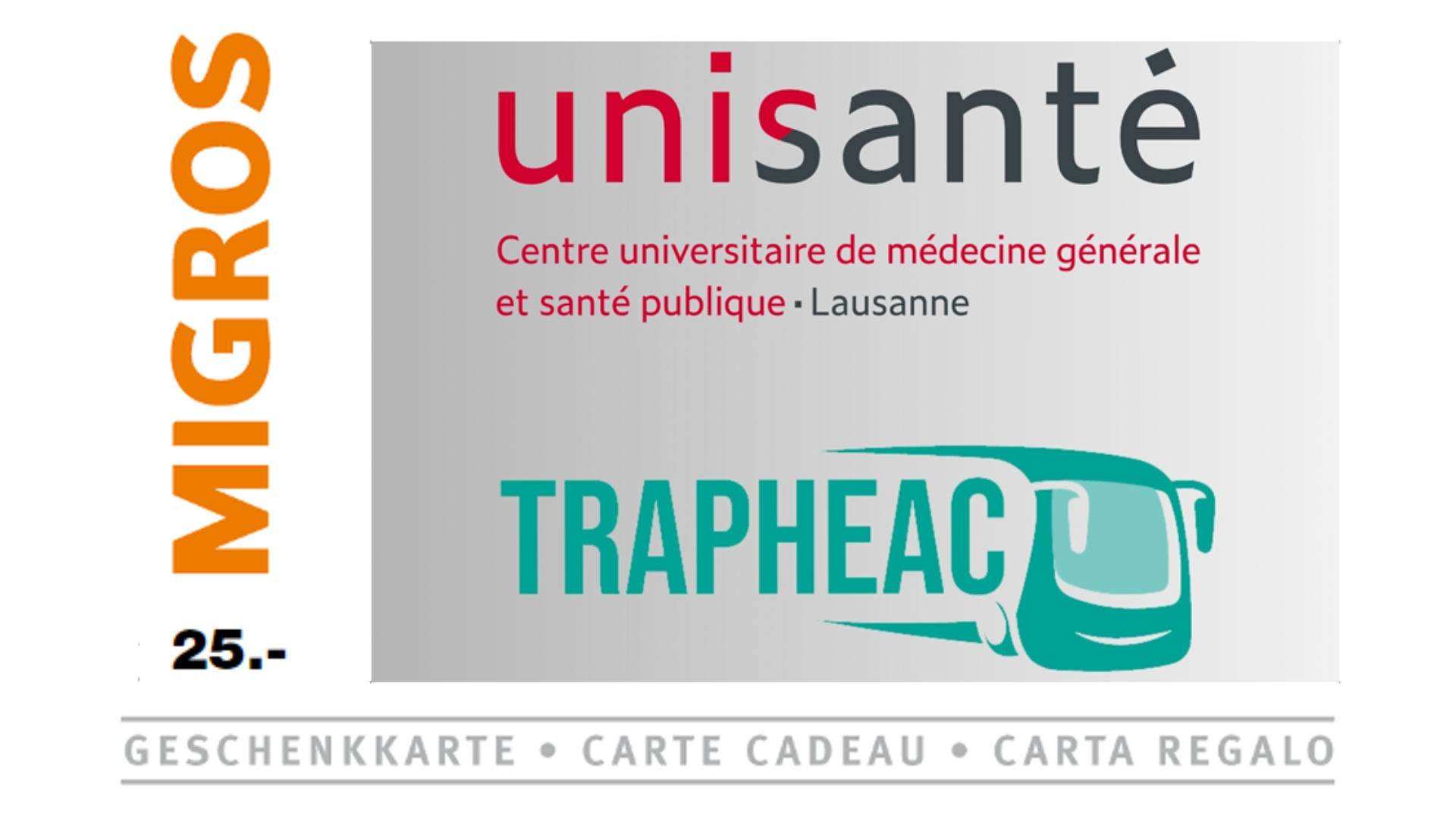
The ethics committee has now authorized us to offer compensation to those who have fully completed the TRAPHEAC study inclusion questionnaire. To thank you for your time and effort, we are pleased to send you this Migros voucher worth CHF 25.-.
SCIENTIFIC RESULTS AND COMMUNICATIONS
15.10.2025 - Presentation
Presentation of initial results
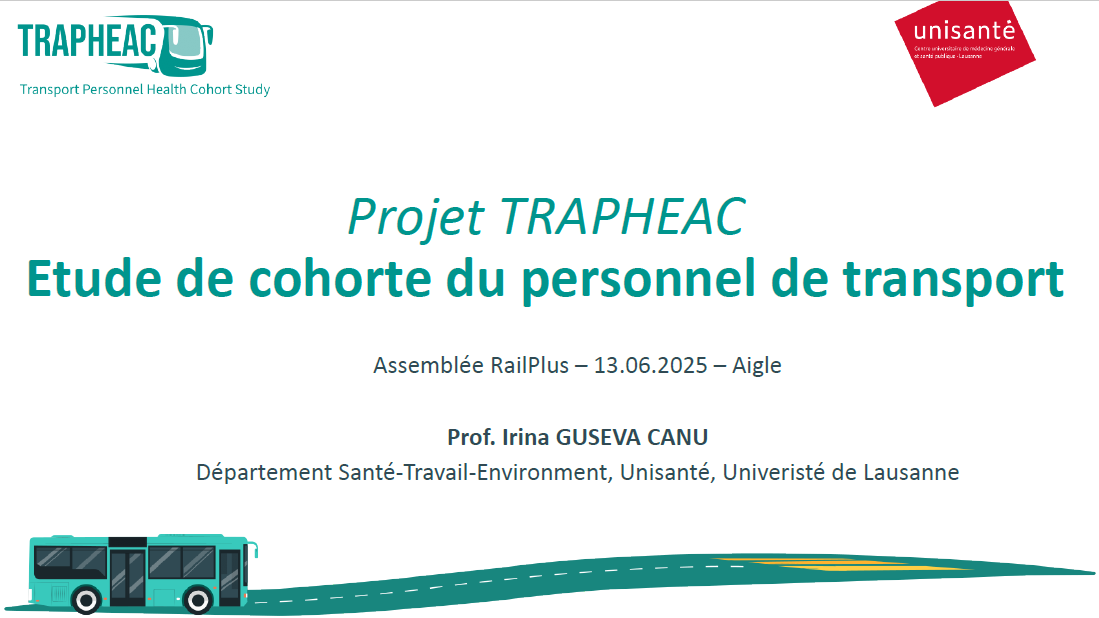
Presentation of initial results to RailPlus companies.
26.06.2023 - Article
The Impact of the COVID-19 Pandemic on the Working Conditions and Health of Swiss Bus Drivers
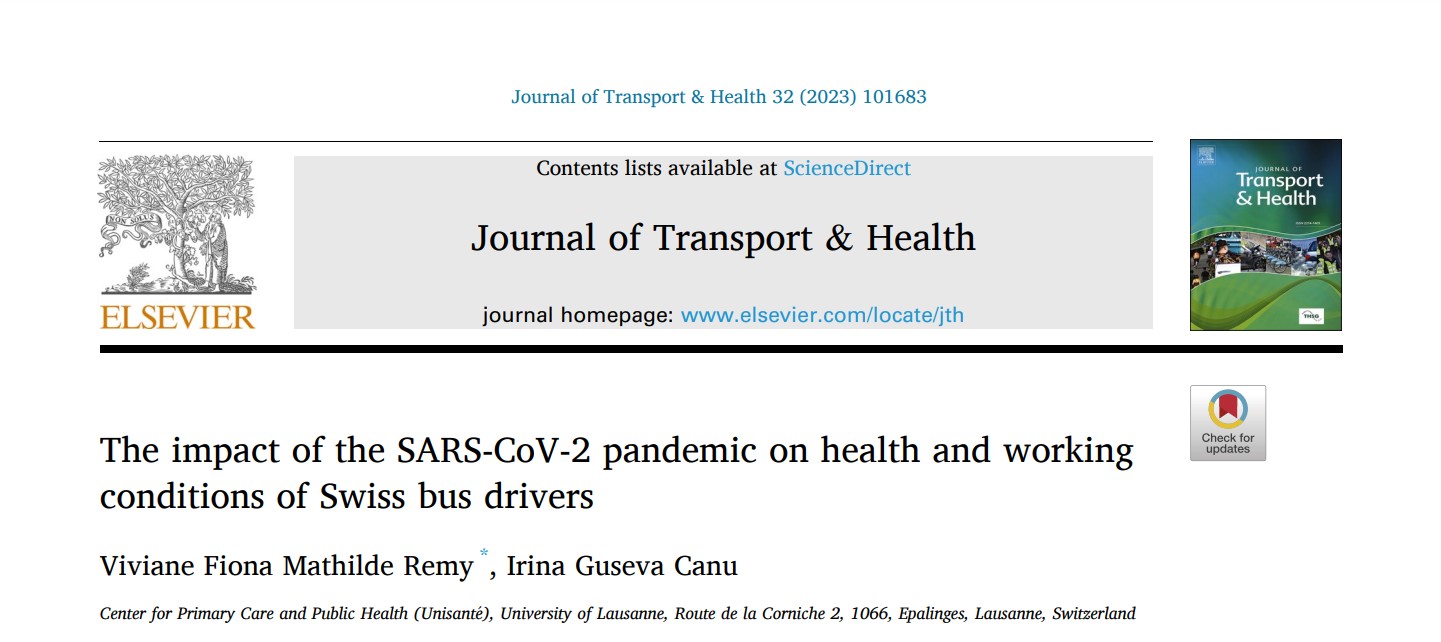
Curious to know how COVID-19 impacted the working conditions of bus drivers in Switzerland? Discover the results of a 2022 survey conducted among 916 unionized bus drivers.
21.06.2023 - Article
The health of Swiss bus drivers between 2010 and 2022
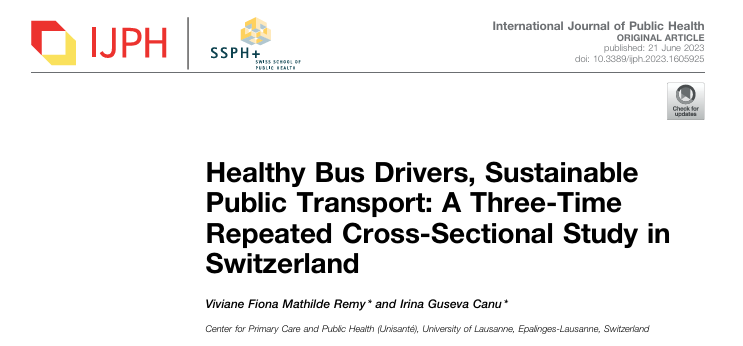
Want to know how the health of bus drivers has evolved in recent years? Discover the key findings of a study that compares their health status and working conditions between 2010 and 2022.
IN THE PRESS
29.09.2024 - Article - FR
Bus drivers: health at risk
26.07.2024 - Video - FR
Behind the wheel of the buses, stress is everywhere.
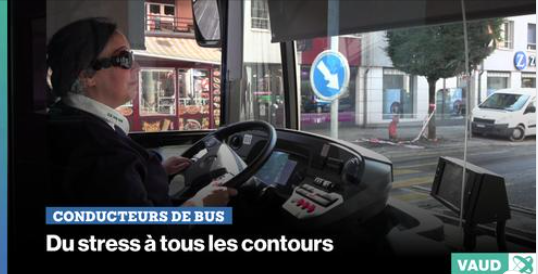
10.07.2024 - Video - FR/IT/DE
To what extent is poor health an occupational problem?
